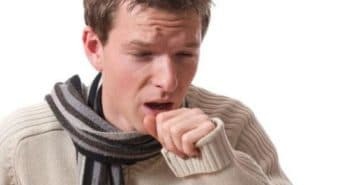
Cough is a reflex act that occurs due to irritation of the respiratory tract. It is an important protective mechanism that prevents ingress and helps to remove foreign bodies from the larynx, trachea and bronchi. After the action on the receptors, there is a forced and strong exhalation, along with this the movement of mucociliary cells( epithelium with small cilia in the bronchi) increases. Different types of cough and the time of its occurrence is a symptom that allows differentiating diseases or pathological conditions.
Contents
- 1 Causes and mechanism of cough after eating
- 2 Types of cough
- 3 Methods of treatment
- 4 Video
Causes and mechanism of cough after eating
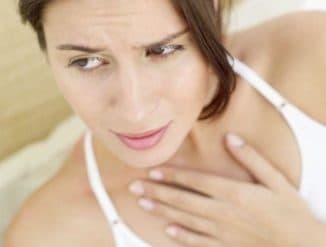 Cough after eating is one of such symptoms. Eating can provoke it for 3 main reasons:
Cough after eating is one of such symptoms. Eating can provoke it for 3 main reasons:
- Ingestion of food in the respiratory tract. With uncoordinated breathing and eating, for example during a conversation, the epiglottis, which blocks the entrance to the larynx, opens and lets the food into the upper respiratory tract. Partial or complete blockage of the lumen will lead to the development of cough or mixed dyspnea;
- Presence of chronic or acute respiratory diseases. Food intake will be a provocative factor that reflexively( transferring the impulse from the vagus nerve to the brain) will cause increased production and secretion of mucus in the bronchi, which will lead to a fit of coughing;
- Impossibility of passing food through the esophagus into the stomach or throwing food from the stomach into the esophagus. There are several pathological conditions that limit the passage of food: stenosis or spasm of the esophageal valve, atony of the esophagus( with neurological disorders and disruption of innervation, due to defeat of the vagus nerve), swelling.
Rejection from the stomach is observed with weakness of the esophagus - gastroesophageal reflux disease( GERD).
Types of cough
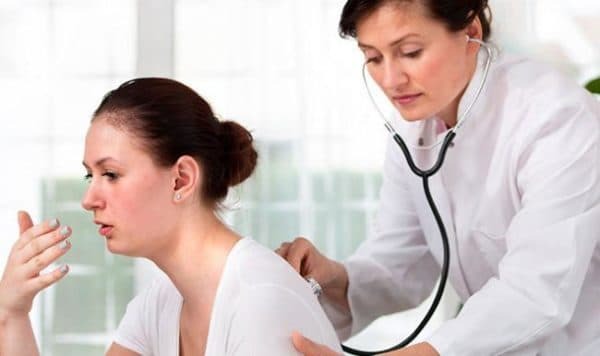
The true cause of cough after a meal will help to establish a doctor
You can find out the true cause if you determine the type of cough. The nature of this symptom will allow to differentiate the localization of the disease and the duration of the course of the process. Basic types of cough after eating:
- Cough with phlegm. It indicates the defeat of the respiratory tract. As a rule, eating can stimulate a cough reflex in people with chronic nonspecific lung diseases: chronic bronchitis, COPD, emphysema and bronchial asthma. As a result, there is an increased synthesis and secretion of mucus, which is excreted as sputum. In addition to chronic diseases, cough after eating can also occur in acute respiratory system diseases such as bronchitis, tracheitis and pneumonia;How to use syrup for children from cough with sputum, is indicated in the article.
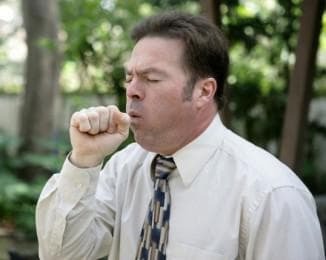
- Dry cough is a symptom that is most often a sign of aspiration( ingestion of food) in the upper respiratory tract. This condition is extremely dangerous and requires immediate assistance, since with the subsequent passage of particles along the trachea into the bronchi and lungs, a menacing complication may occur-aspiration pneumonia;What to do when a child has a dry cough with no signs of a cold, is indicated in this article.
- Cough with vomiting is an erroneous term that is not recognized in clinical practice. Cough movements, which are accompanied by vomiting immediately after a meal, are called esophageal vomiting. This is an important symptom of a serious illness. Common causes are stenosis of the esophagus valve, GERD or tumor. If after a meal takes 15 minutes to 2 hours, this is a certificate of stomach vomiting, which is accompanied by a sour taste in the mouth and heartburn. After 3 hours, intestinal vomiting occurs. What to do when a very severe cough before vomiting in an adult is indicated in this article.
For any form of vomiting, it can enter the respiratory tract and also cause aspiration pneumonia with more severe course.
Treatment Methods
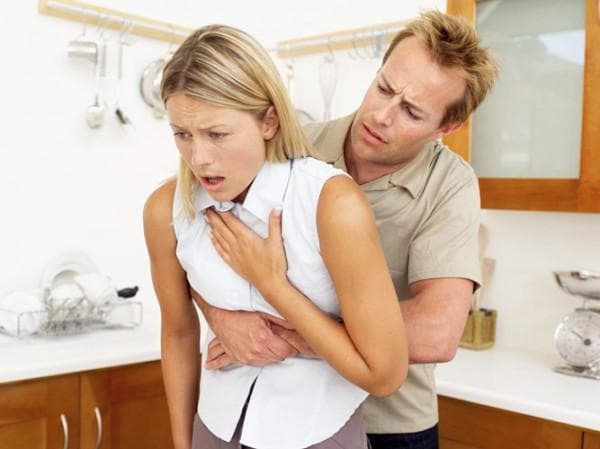
If the patient has started an attack of cough, you need to grab him from behind, keeping your hands just below the sternum and making sharp jerky movements up and on yourself. This method is optimal for cleansing the upper respiratory tract
Each of these states needs an individual approach to treatment. Having determined the type of cough and, if possible, its cause( ask the patient for the presence of diseases of the respiratory system or GASTROINTESTINAL TRACT, find out how often there is a cough, etc.), it is necessary to start providing first aid.
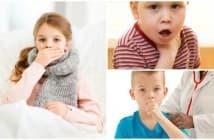 What to do when the month does not pass a cough with phlegm.
What to do when the month does not pass a cough with phlegm.
How folk remedies can help liquefy sputum when coughing, is indicated in the article.
What is the treatment for the medicines of a smoker's cough, is indicated here: http: //prolor.ru/g/lechenie/ kashel-kurilshhika-kak-izbavitsya.html
When aspiring food, it is best to facilitate its departure by the following actions:
- to empty the mouth of the contents;
- grasp the patient from behind, pulling his hands just below the sternum and making sharp jerky movements up and on himself. This method is optimal for cleansing the upper respiratory tract;
- if your actions are ineffective, you need to call an ambulance, which will promptly perform tracheostomy and restore breathing.
Cough with phlegm can not be stopped with antitussive medicines, as this is a necessary protective reflex, which displays the pathological contents of the bronchi and trachea.
However, this process can be facilitated with the help of mucolytic drugs, which strengthen the 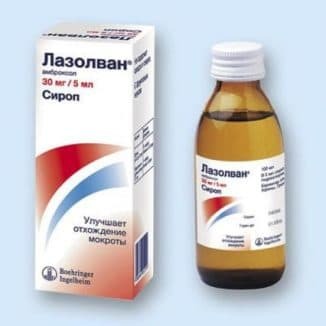 movement of mucociliary epithelium and increase the secretion of respiratory tract glands. For example: ambroxol( Lazolvan).About how inhalations are made with lazolvanom with laryngitis, it is indicated in this article, acetylcysteine (ACTS), anise drops, licorice root, carbocysteine (mucosol), tablets for cough Mukaltin.
movement of mucociliary epithelium and increase the secretion of respiratory tract glands. For example: ambroxol( Lazolvan).About how inhalations are made with lazolvanom with laryngitis, it is indicated in this article, acetylcysteine (ACTS), anise drops, licorice root, carbocysteine (mucosol), tablets for cough Mukaltin.
If the patient has chronic respiratory illnesses( for example, there are symptoms of running bronchitis) and he has signs of expiratory dyspnea( it is impossible to exhale fully with normal or increased inspiration), drugs that expand the lumen of the bronchi can be used. The drug of choice for rapid relief of the condition is salbutamol.
As a rule, cough after esophageal vomiting immediately stops. Immediate help is the release of the oral cavity from the vomit and the intake of sorbents: activated carbon, smectas, enterodesis, etc.
In other types of vomiting, recurring periodical urges are possible. The help is similar. The use of sorbents is recommended for the restoration of acid-base balance in the lumen of the gastrointestinal tract and the accelerated removal of  harmful agents , which can stimulate gastric or intestinal vomiting( microorganism toxins, aggressive chemicals, etc.) This symptom is a mandatory indication for immediate treatmentdoctor, as it can be associated with a serious disease and entail the development of complications.
harmful agents , which can stimulate gastric or intestinal vomiting( microorganism toxins, aggressive chemicals, etc.) This symptom is a mandatory indication for immediate treatmentdoctor, as it can be associated with a serious disease and entail the development of complications.
Video
Learn from this video the unusual causes of cough:
Cough after eating is an ambiguous symptom that can have a different nature and localization of the pathological process. His appearance will help determine her and begin to provide immediate adequate assistance. After it, it is necessary to deal with the treatment of the disease, which provoked the development of a cough reflex. Referring to a qualified doctor is the best method of treatment for a patient.
